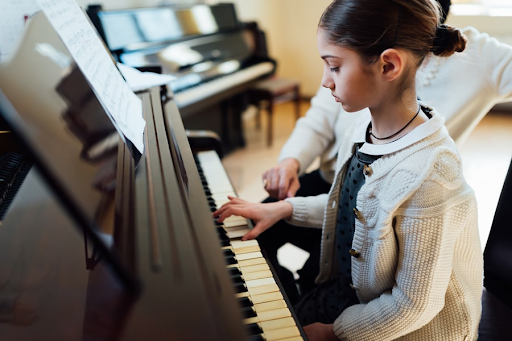Introduction to Music and Dance Academies
In today’s vibrant cultural landscape, music and dance hold a special place in the hearts of many. For those passionate about honing their skills and diving deeper into these artistic realms, music and dance academies serve as sanctuaries of learning, creativity, and self-expression. These academies provide a nurturing environment where aspiring artists can flourish under the guidance of seasoned professionals. Let’s embark on a comprehensive journey into the world of music and dance academies, exploring their significance, offerings, and impact on individuals and communities.
https://www.allegro-academy.com/
Understanding the Essence of Music and Dance Academies
Defining Music and Dance Academies
Music and dance academies are educational institutions dedicated to the study, practice, and advancement of musical and dance disciplines. They serve as hubs of artistic development, fostering a conducive environment for students to explore various genres, techniques, and styles. These academies often offer structured programs tailored to different skill levels, ranging from beginners to advanced performers.
Mission and Vision
At the core of every reputable music and dance academy lies a compelling mission and vision aimed at nurturing talent, fostering creativity, and promoting cultural enrichment. These institutions aspire to instill a deep appreciation for music and dance while empowering individuals to reach their full artistic potential. Through comprehensive curricula, engaging performances, and community outreach initiatives, music and dance academies strive to cultivate well-rounded artists and cultural ambassadors.
The Pedagogy of Music and Dance Academies
Curriculum Design and Structure
Music and dance academies design their curricula meticulously to provide students with a comprehensive education in their chosen discipline. Courses typically encompass a wide array of subjects, including music theory, technique, repertoire, choreography, improvisation, and performance skills. Additionally, students may have the opportunity to explore related areas such as music history, composition, dance therapy, and interdisciplinary studies.
Pedagogical Approaches
Educators at music and dance academies employ diverse pedagogical approaches to cater to the unique needs and learning styles of their students. These approaches may include traditional instruction, experiential learning, collaborative projects, masterclasses, workshops, and interdisciplinary collaborations. By incorporating a blend of theoretical knowledge and practical application, instructors nurture students’ creativity, critical thinking, and artistic expression.
Faculty Expertise
Central to the success of any music and dance academy is its faculty of accomplished artists, educators, and scholars. Faculty members bring a wealth of experience, expertise, and passion to their teaching, serving as mentors and role models for aspiring performers. Through personalized guidance, constructive feedback, and mentorship, instructors inspire students to strive for excellence and pursue their artistic aspirations with confidence and dedication.
Embracing Diversity and Inclusivity
Celebrating Cultural Diversity
Music and dance academies embrace cultural diversity as a cornerstone of artistic expression and understanding. These institutions recognize the rich tapestry of musical and dance traditions spanning the globe, offering students opportunities to explore various cultural practices, rituals, and forms of artistic expression. By celebrating diversity, music and dance academies foster cross-cultural exchange, mutual respect, and global citizenship among students and faculty alike.
Promoting Inclusivity and Accessibility
Inclusivity and accessibility are integral principles guiding the ethos of music and dance academies. These institutions strive to create welcoming and inclusive environments where individuals of all backgrounds, abilities, and identities feel valued and empowered to participate fully in artistic endeavors. Through proactive initiatives such as scholarship programs, outreach efforts, and adaptive accommodations, music and dance academies ensure that every aspiring artist has the opportunity to pursue their passion for music and dance.
The Impact of Music and Dance Academies
Personal Growth and Development
For students enrolled in music and dance academies, the journey extends far beyond mastering technical skills and repertoire. These institutions provide fertile ground for personal growth, self-discovery, and holistic development. Through artistic exploration, creative expression, and collaborative experiences, students cultivate essential life skills such as discipline, perseverance, resilience, and self-confidence. Moreover, engagement in music and dance fosters emotional intelligence, empathy, and a deep sense of connection with oneself and others.
Artistic Excellence and Innovation
Music and dance academies play a pivotal role in nurturing artistic excellence and fostering innovation within the creative arts landscape. By providing aspiring artists with rigorous training, mentorship, and performance opportunities, these institutions cultivate a new generation of skilled performers, choreographers, composers, and educators. Moreover, music and dance academies serve as hotbeds of innovation, where students and faculty explore new techniques, technologies, and modes of artistic expression, pushing the boundaries of tradition and embracing experimentation.
Cultural Enrichment and Community Engagement
Beyond the walls of the academy, music and dance have the power to enrich communities, stimulate dialogue, and promote social cohesion. Music and dance academies actively engage with their local communities through outreach programs, performances, and collaborative projects that bridge cultural divides and foster mutual understanding. Whether through school partnerships, public concerts, or outreach initiatives in underserved neighborhoods, these academies demonstrate the transformative power of music and dance as agents of positive change.
Conclusion: Inspiring the Next Generation of Artists
In conclusion, music and dance academies stand as beacons of artistic excellence, creativity, and cultural enrichment in today’s ever-evolving world. Through their commitment to nurturing talent, fostering diversity, and promoting inclusivity, these institutions inspire the next generation of artists to dream, create, and innovate. As students embark on their transformative journey within the hallowed halls of music and dance academies, they carry with them the torch of artistic tradition, ready to illuminate the world with the timeless beauty and universal language of music and dance.
